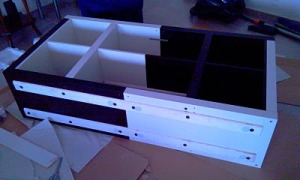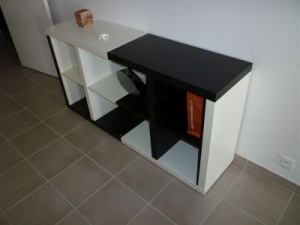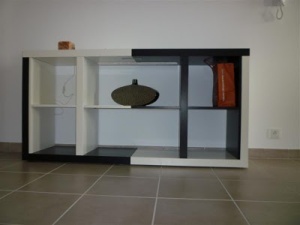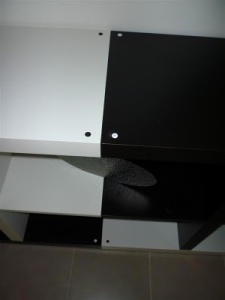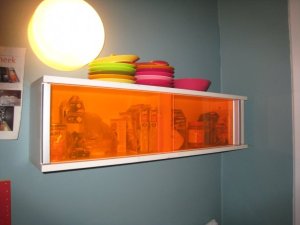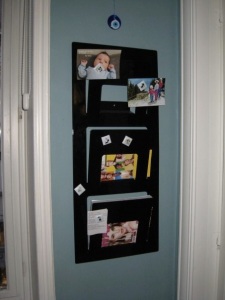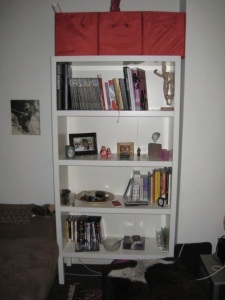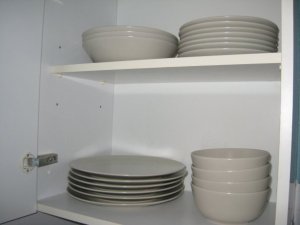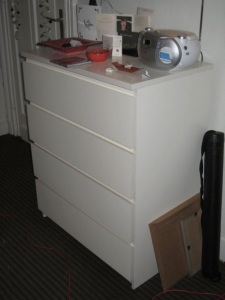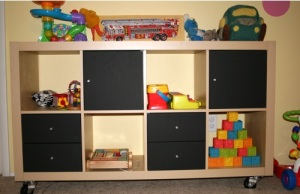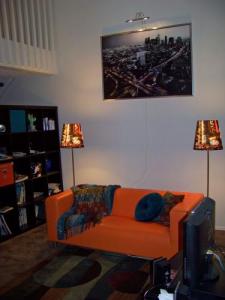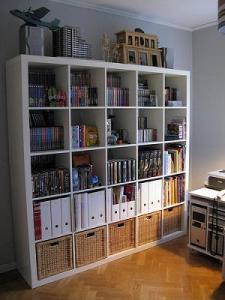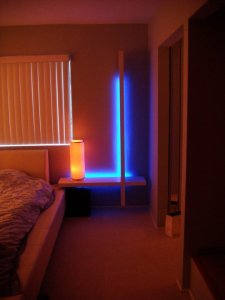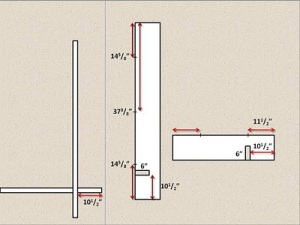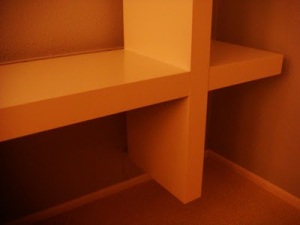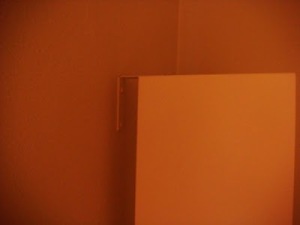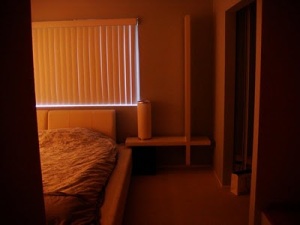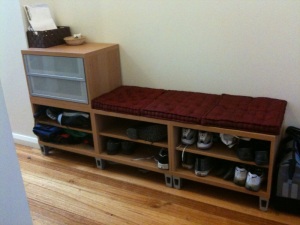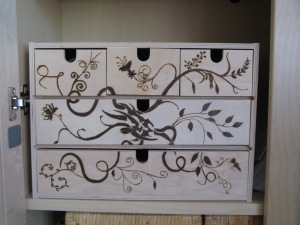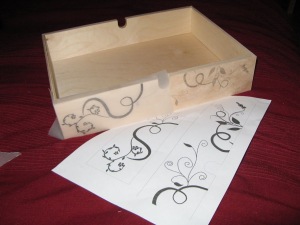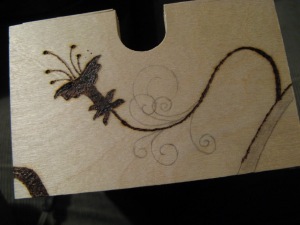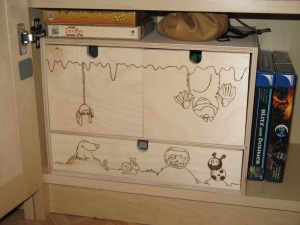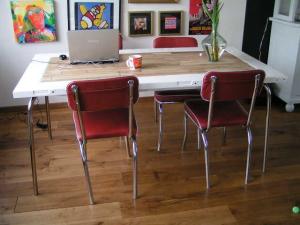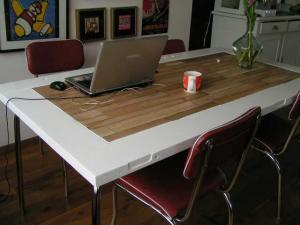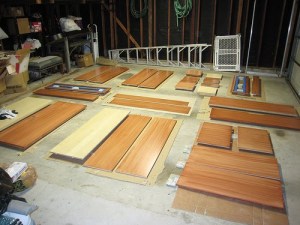
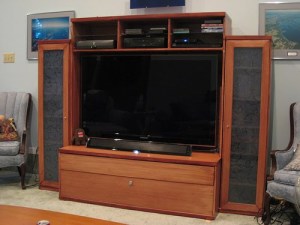
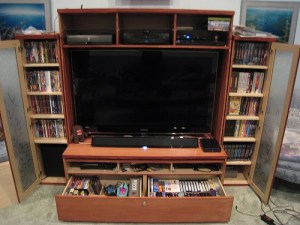
Materials: Bonde TV Bench with hutch and 3 bookshelves with 2 doors, saw, drill, palm sander, stain, polyurethane, fabric from Jo-Ann, double-stick crafing tape, window film from Home Depot
Description: I recently upgraded from an old small television to a new huge one, and I needed a new entertainment center to put it in. I finally settled on a Bonde system on IKEA, in large part because it was inexpensive on clearance. The base system was the birch color, which I wasn’t thrilled with for my decor, and the hutch was wide enough but not quite tall enough for the new TV, so I thought I could hack it to make it taller. I bought the TV bench, hutch, and two side bookshelves with doors to store my DVD collection. On the way out I found another bookshelf without doors in the as-is section and nabbed it (at half off the clearance price!) to provide extra pieces for the hutch extension.
First, I dismantled the sacrificial as-is bookshelf. The top became a stain-test piece, the shelves were set aside to use in the final bookshelves, eight-inch pieces were cut off the sides to extend the height of the sides of the TV hutch, and an eight-inch strip of the backerboard was also cut off for the hutch. The holes in the hutch sides were moved up to accommodate the new mounting location of the shelves at the top of the hutch, and extra holes were drilled in the new extensions to match the hole spacing for the glass shelves in the hutch.
Next, I spread all the pieces out on cardboard on my garage floor. Cam pegs, dowel pegs, and random plasticware from my cupboard helped hold pieces off the ground as necessary for edge and double-side staining. A light sanding of all the surfaces with 220 grit helped prepare the very thin birch veneer for stain, but it was easy to oversand. After wiping down all the dust, I applied two coats of Minwax stain in Red Chestnut color, though getting the color smooth was finicky work due to that thin thin veneer. I followed that up with two coats of satin polyurethane to protect the stain. It turned out that the recommendation to sand between coats was a bad one for this project due to the thin layer of stain, but luckily most of the parts I discovered that on aren’t very visible. I left all the surfaces that would be inside closed spaces the original birch color to save work and make the inside surfaces brighter. The doors ended up taking the stain differently than the rest of the pieces, but I did my best to even them out.
After everything had dried really well, I assembled everything. The hutch side extensions were fastened to the top of the hutch sides with glue and dowel pegs. In retrospect, I should have done that before staining to ensure even colors, but live and learn. The fact that the extension joint lines up with the top of the bookshelves helps camouflage it. The backerboard extension was nailed onto the back of the hutch above the thick TV-mount backerboards and below the shelves, wehre it’s pretty well hidden by the TV.
Finally, I applied a translucent window film with a vine pattern (available at Home Depot and other vendors) to the bookshelf door windows, and on the backside of the doors I used double-stick crafting tape to attach pieces of midnight blue organza fabric with little gold nubbins scattered across it like stars in the night sky (found at Jo-Ann Fabric and Craft around Christmas).
DVDs and the subwoofer are stored discreetly in the bookshelves; the TiVo, VCR, and DVD player are mounted in the TV hutch for easy remote control; the big drawer in the TV unit has videotapes on one side and video games and oversize DVD sets on the other; and the door area of the TV hutch hides video game consoles, a UPS, and video and network switching equipment.
~ Amy, Houston, Texas, US
